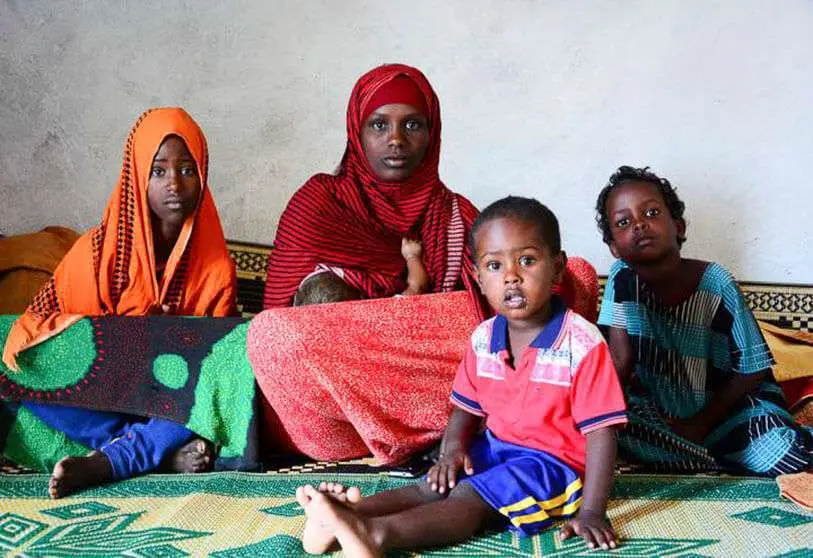COVID-19 in Sub-Saharan Africa, the virus that could kill 67,000 children

The coronavirus pandemic has brought some regions of sub-Saharan Africa to the brink. The impact of the disease has put more than 67,000 children at risk of dying of hunger in sub-Saharan Africa before the end of this year, according to a study by Save The Children, which indicates that an average of 426 children per day are at risk of dying unless urgent action is taken.
Food insecurity is, according to the Food and Agriculture Organization of the United Nations (FAO), "the likelihood of a dramatic decline in food access or consumption levels, due to environmental or social risks, or reduced coping capacities". In contrast, food security appears when "all people have physical, social and economic access to sufficient, safe and nutritious food to meet their dietary needs and food preferences for an active and healthy life".
Floods, locust storms or rising food prices have exacerbated this food insecurity. The emergence of the coronavirus has exacerbated existing inequalities and crippled the economy. In addition, this pathogen has led to dozens of people being left without a way to earn an income, which is necessary to access health services or to buy basic commodities. The current pandemic will cost the sub-Saharan African region between $37 and $79 billion in lost production by 2020 alone, reducing agricultural productivity, weakening supply chains, increasing trade tensions, limiting employment prospects and exacerbating political and regulatory uncertainty, according to the World Bank.
The coronavirus could increase poverty by up to 23 per cent in sub-Saharan Africa, according to estimates by some international organisations, which predict that by 2030, some 433 million people will be undernourished in Africa. "Life was difficult for me and my family, but I worked hard and we survived. The coronavirus has made my situation worse. Now, jobs are few and far between. Before we received support, we only ate once a day and that was only in the morning. I have seen my children go to sleep hungry. The worst feeling for a mother is when she does not feed her family," a mother of six living in Puntland, Somalia, told Save The Children, Ubah.
Rising prices and difficult access to certain basic services have led thousands of children to live at risk of severe malnutrition. The NGO Save The Children has reported that before the pandemic, more than 26 million children in Eastern and Southern Africa were stunted and 2.6 million children suffered from severe acute malnutrition, the deadliest form of malnutrition. The same organization estimates that in West and Central Africa, at least 15.4 million children under five years of age suffer from severe acute malnutrition this year - a 20 percent increase over previous estimates.
"We are already seeing the devastating effects of this virus on some of the world's hungriest people. Coronavirus measures have decimated livelihoods and crop production, jobs have come to a standstill and food is becoming increasingly expensive, if at all. In short, many parents can no longer put food on the table for their children," lamented Ian Vale, Save the Children's regional director for Eastern and Southern Africa.
Sub-Saharan Africa was one of the most food-insecure regions in the world even before the emergence of this pathogen, which has already infected some 25.5 million people worldwide. Save The Children fears that this area will become home to more than half of the world's chronically hungry if current trends continue. "We are already seeing more children coming to our clinics suffering from undernutrition every day, and we know that we are only at the beginning. If we wait until the clinics are full, it will be too late. The food crisis could kill tens of thousands of children unless they receive immediate humanitarian assistance. We cannot afford to wait," said Vale.
The NGO has responded to the current health and food crisis by providing food and even money to all those families who are vulnerable. It has also increased its efforts to ensure access to clean and safe water and to provide access to health and nutrition services in a manner that is safe for the coronavirus.







